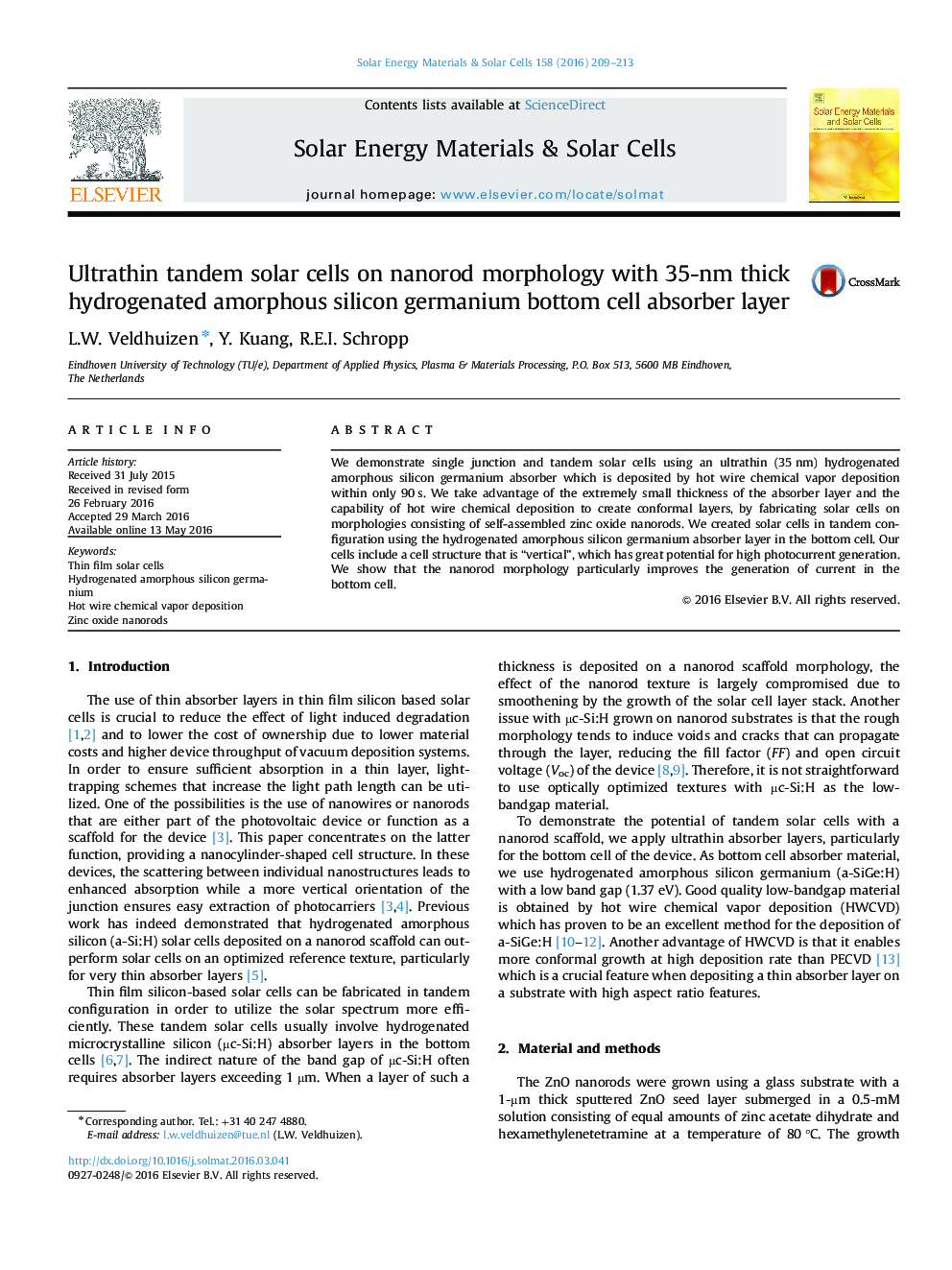| Article ID | Journal | Published Year | Pages | File Type |
|---|---|---|---|---|
| 6457646 | Solar Energy Materials and Solar Cells | 2016 | 5 Pages |
â¢Solution-grown ZnO nanorods were used as scaffold for ultrathin solar cells.â¢Single junction and tandem solar cells were made using a 35-nm thick a-SiGe: H layer.â¢Hot wire chemical vapor deposition yields an a-SiGe: H absorber layer in 90 s.â¢The nanorod morphology provides high current generation capability to the bottom cell.
We demonstrate single junction and tandem solar cells using an ultrathin (35Â nm) hydrogenated amorphous silicon germanium absorber which is deposited by hot wire chemical vapor deposition within only 90Â s. We take advantage of the extremely small thickness of the absorber layer and the capability of hot wire chemical deposition to create conformal layers, by fabricating solar cells on morphologies consisting of self-assembled zinc oxide nanorods. We created solar cells in tandem configuration using the hydrogenated amorphous silicon germanium absorber layer in the bottom cell. Our cells include a cell structure that is “vertical”, which has great potential for high photocurrent generation. We show that the nanorod morphology particularly improves the generation of current in the bottom cell.
